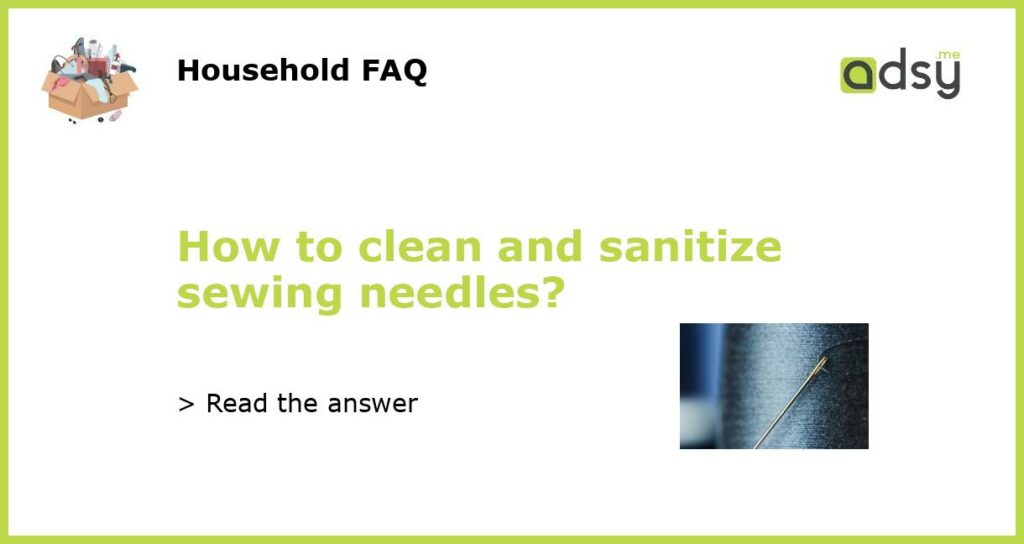Understanding the importance of cleaning and sanitizing sewing needles
Keeping your sewing needles clean and sanitized is essential for several reasons. Firstly, it helps to remove any dirt, oils, or residue that may accumulate on the needle during use. This can prevent buildup that could lead to thread snags or uneven stitching. Secondly, cleaning and sanitizing your needles can help prevent the spread of germs and bacteria, ensuring that your sewing projects are safe and hygienic. Lastly, taking care of your sewing needles by regularly cleaning and sanitizing them can extend their lifespan, saving you money on replacements.
Simple steps to clean sewing needles
Cleaning your sewing needles is a straightforward process that requires minimal effort. Here’s a step-by-step guide on how to do it:
- 1. Start by gathering the necessary supplies, including a small dish or bowl, warm water, dish soap, and a soft cloth or paper towel.
- 2. Fill the dish or bowl with warm water and add a few drops of dish soap.
- 3. Submerge the sewing needles in the soapy water and gently swish them around to loosen any dirt or residue.
- 4. Use the soft cloth or paper towel to wipe each needle individually, removing any remaining debris.
- 5. Rinse the needles under clean running water to remove any soap residue.
- 6. Pat the needles dry with a clean towel or leave them to air dry completely.
Sanitizing sewing needles for extra cleanliness
In addition to cleaning, sanitizing your sewing needles can provide an extra level of cleanliness. Here are a few methods you can use:
- 1. Rubbing alcohol: Dip a cotton ball or pad in rubbing alcohol and wipe the sewing needles thoroughly.
- 2. Hydrogen peroxide: Apply a small amount of hydrogen peroxide to a cotton ball or pad and gently wipe the needles.
- 3. UV sterilizer: Consider investing in a UV sterilizer specifically designed for sewing needles. These devices use ultraviolet light to kill bacteria and germs.
- 4. Boiling water: If your needles are made of metal or glass, you can boil them in water for a few minutes to sanitize them. Ensure they are completely dry before use.
Tips for maintaining clean sewing needles
Keeping your sewing needles clean doesn’t end with a one-time cleaning and sanitizing process. Here are some tips to help you maintain their cleanliness:
- 1. Clean and sanitize your sewing needles after each use to prevent the accumulation of dirt and bacteria.
- 2. Avoid using dirty or damaged needles, as they can cause fabric damage or affect the quality of your stitches.
- 3. Store your needles properly in a clean and dry container to protect them from dust and dirt.
- 4. Consider using needle organizers or cases with separate compartments for different types and sizes of needles.
- 5. Regularly inspect your sewing needles for any signs of wear or damage, such as bent or rusted tips. Replace them if necessary.
The importance of needle maintenance for sewing success
Properly cleaning, sanitizing, and maintaining your sewing needles is crucial for achieving sewing success. By following these steps and tips, you can ensure that your needles remain clean, sturdy, and free from harmful bacteria. This will result in better stitch quality, increased longevity of your needles, and a hygienic sewing environment. Make needle maintenance a regular part of your sewing routine, and you’ll enjoy cleaner stitches and more enjoyable sewing experiences.






